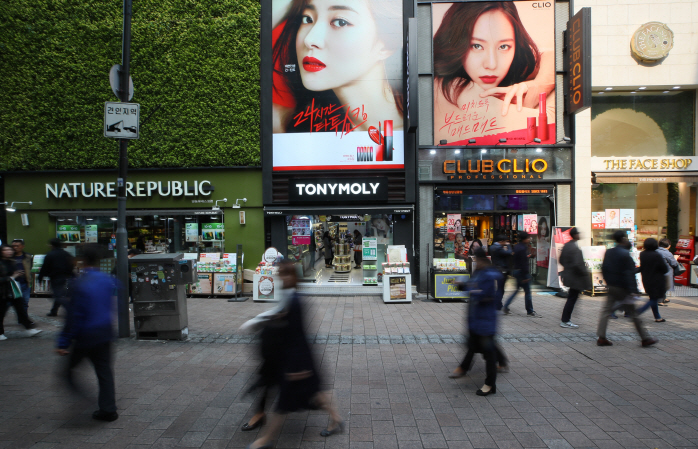
Cosmetics shops, after reaching a market size of 2.8 trillion won (US$2.3 billion) in 2016, have been on a steep downturn. (image: Yonhap)
SEOUL, Jun. 17 (Korea Bizwire) — Cosmetics shops in South Korea that have been leading the K-beauty industry over the last 15 years are facing a harsh financial reckoning due to excessive competition and plunging Chinese demand.
Cosmetics shops, after reaching a market size of 2.8 trillion won (US$2.3 billion) in 2016, have been on a steep downturn, shrinking to a market of 1.7 trillion won as of last year.
Missha, opening its flagship store in 2002, was soon joined by The Face Shop, Innisfree, Tonymoly and other brand shops that resulted in excessive competition in the market.
What’s more, the THAAD crisis between South Korea and China in 2017 put a damper on Chinese demand, serving a fatal blow to cosmetics shops.
The rise of health and beauty stores that sell multiple brand products, including Olive Young and LOHBs, further undermined the survival of single-brand cosmetics shops.
“Cosmetics shops used to depend mostly on Chinese demand. Now, advanced Chinese cosmetics products are driving out South Korean brands,” said Kim Taek-shik, head of beauty and cosmetics at the Korea Health Industry Development Institute.
In response, cosmetics shops are scrambling to find ways to survive either by selling more than one brand’s products or reducing store size.
Missha, for instance, was recently re-established as NUNC, a multi-brand beauty store, to overcome the crisis.
NUNC is following a path blazed by Olive Young and other H&B stores to sell not only cosmetics, but also other health and beauty products.
Experts argue that these decisions are based on the fear that one-brand shops will be further shunned by consumers in an already deteriorating market environment.
They also explained that in the end, one-brand shops and their sales strategy that combines branding and distribution have failed to meet various consumer needs.
“Sephora, a multinational beauty franchise, is soon to enter the South Korean market, which will only exacerbate competition in the market,” said Oh Rin-ah, a researcher at eBest Investment and Securities.
“The only way for one-brand shops to survive is to either increase exports or enter the Chinese market, which is also difficult since Chinese consumers are demonstrating stronger preference for local brands, if not high-end products.”
H. M. Kang (hmkang@koreabizwire.com)






